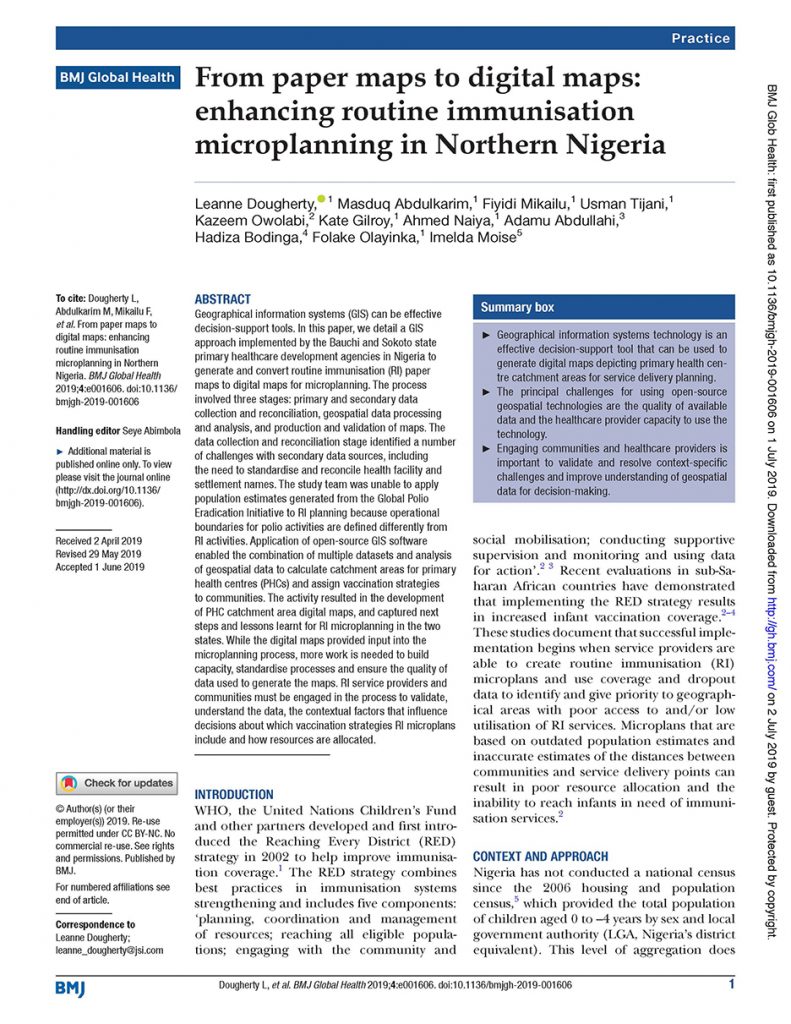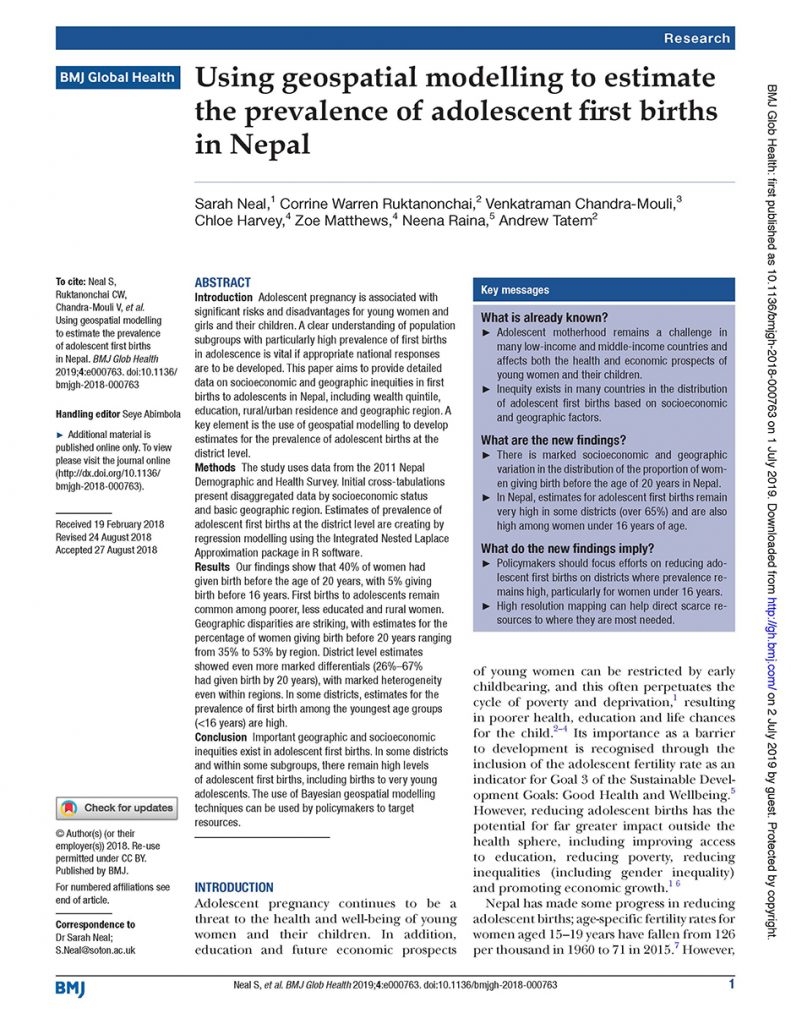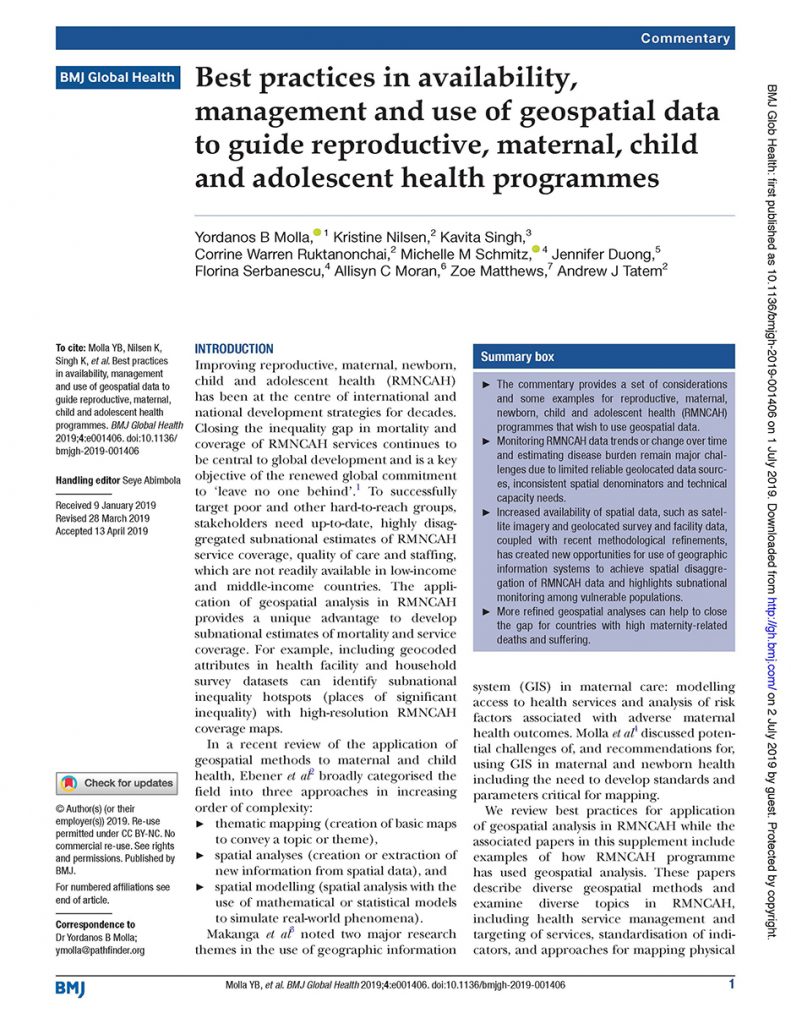
Geographical information systems (GIS) can be effective decision-support tools. In this paper, we detail a GIS approach implemented by the Bauchi and Sokoto state primary healthcare development agencies in Nigeria to generate and convert routine immunisation (RI) paper maps to digital maps for microplanning. […]
Read More…

This paper proposes three additional emergency obstetric and newborn care (EmONC) indicators to the standard set for monitoring EmONC; two consider physical accessibility and a third addresses referral time from basic to comprehensive EmONC services. We provide examples to illustrate how the AccessMod tool can be used to measure these indicators, analyse service utilisation and […]
Read More…

The application of a geographic information system (GIS) in public health is relatively common in Bangladesh. However, the use of GIS for planning, monitoring and decision-making by local-level managers has not been well documented. This assessment explored how effectively local government health managers used maps with spatial data for planning, resource allocation and programme monitoring. […]
Read More…

Adolescent pregnancy is associated with significant risks and disadvantages for young women and girls and their children. A clear understanding of population subgroups with particularly high prevalence of first births in adolescence is vital if appropriate national responses are to be developed. This paper aims to provide detailed data on socioeconomic and geographic inequities in […]
Read More…

This study linked data from the 2012 Haiti Demographic and Health Survey and the 2013 Haiti Service Provision Assessment to estimate the extent to which women’s contraceptive use is associated with the method choices available in Haiti’s health facilities. […]
Read More…

Existence of inequalities in quality and access to healthcare services at subnational levels has been identified despite a decline in maternal and perinatal mortality rates at national levels, leading to the need to investigate such conditions using geographical analysis. The need to assess the accuracy of global demographic distribution datasets at all subnational levels arises […]
Read More…

Targeted approaches to further reduce maternal mortality require thorough understanding of the geographic barriers that women face when seeking care. Common measures of geographic access do not account for the time needed to reach services, despite substantial evidence that links proximity with greater use of facility services. Further, methods for measuring access often ignore the […]
Read More…

The commentary provides a set of considerations and some examples for reproductive, maternal, newborn, child and adolescent health (RMNCAH) programmes that wish to use geospatial data. […]
Read More…

Reproductive, maternal, newborn, child and adolescent health (RMNCAH) indicators, such as the maternal mortality ratio, often serve as a litmus test for health system performance, because women’s and children’s health lies at the core of any health system. The health and survival of women and children does not depend on a single intervention, but on […]
Read More…

Pregnancy intervals less than 24 months are associated with adverse maternal, infant, and child health outcomes. However, 47% of all nonfirst births in Ethiopia are spaced less than the World Health Organization-recommended 24-month interpregnancy interval. Prospective analysis of unmet need for family planning (FP) reveals that although 94% of women did not wish to become […]
Read More…










